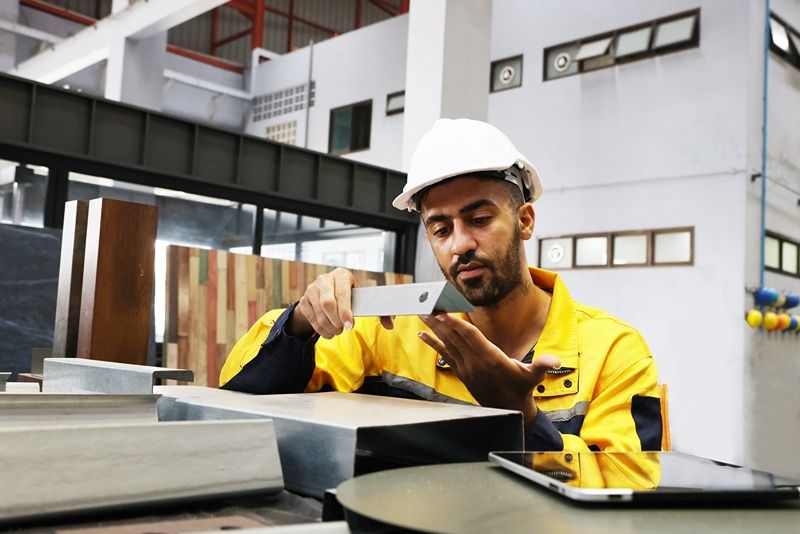Steel thickness plays a pivotal role in the structural performance of pre-engineered buildings (PEBs), influencing factors such as load-bearing capacity, stability, and overall efficiency. Understanding the implications of steel thickness is essential for engineers and builders aiming to optimise PEB designs for both performance and cost-effectiveness.
Load-bearing capacity and structural integrity
Thicker steel sections inherently possess greater load-bearing capacity, enabling them to support heavier loads and span larger distances without compromising structural integrity. In PEBs, where large, column-free spaces are often required, selecting appropriate steel thickness ensures that the structure can withstand imposed loads, including equipment weight, storage materials, and environmental forces such as wind or snow.
However, it's crucial to balance thickness with design requirements. Over-specifying thickness can lead to unnecessary material usage and increased costs, while under-specifying may compromise safety and performance.
Stability and resistance to deformation
Steel thickness directly affects a structure's stiffness and resistance to deformation. Thicker sections provide higher moment of inertia, reducing deflections under load and enhancing the building's ability to maintain its shape and alignment over time. This is particularly important in PEBs, where long-span beams and columns are common.
Moreover, adequate thickness contributes to the structure's ability to resist lateral forces, such as those generated by wind or seismic activity, ensuring stability and occupant safety.
Fabrication and construction considerations
The choice of steel thickness also impacts fabrication and construction processes. Thicker steel sections may require more robust equipment for cutting, welding, and handling, potentially increasing fabrication time and costs. Conversely, thinner sections are easier to work with but may necessitate additional reinforcement or design considerations to meet structural requirements.
Furthermore, transportation and on-site assembly must account for the weight and size of thicker steel components, influencing logistics and crane capacities.
Cost implications
Material costs are directly proportional to steel thickness; thicker sections use more material, leading to higher costs. Therefore, optimising thickness is essential to balance structural performance with budget constraints. Advanced design software and engineering analysis can aid in determining the minimum required thickness to meet performance criteria without incurring unnecessary expenses.
Compliance with design codes and standards
Design codes, such as the Indian Standard IS 800:2007 and Eurocode 3, provide guidelines for selecting appropriate steel thicknesses based on structural requirements and safety factors. Adhering to these standards ensures that PEBs meet legal and safety obligations, providing confidence in the building's performance and durability.
Conclusion
Steel thickness is a critical parameter in the design and construction of pre-engineered buildings, influencing load-bearing capacity, stability, fabrication processes, and overall cost. By carefully selecting appropriate thicknesses in line with design requirements and standards, engineers can optimise PEB performance, ensuring safe, efficient, and cost-effective structures.




 +91 7208055523
+91 7208055523
 Help & support
Help & support
